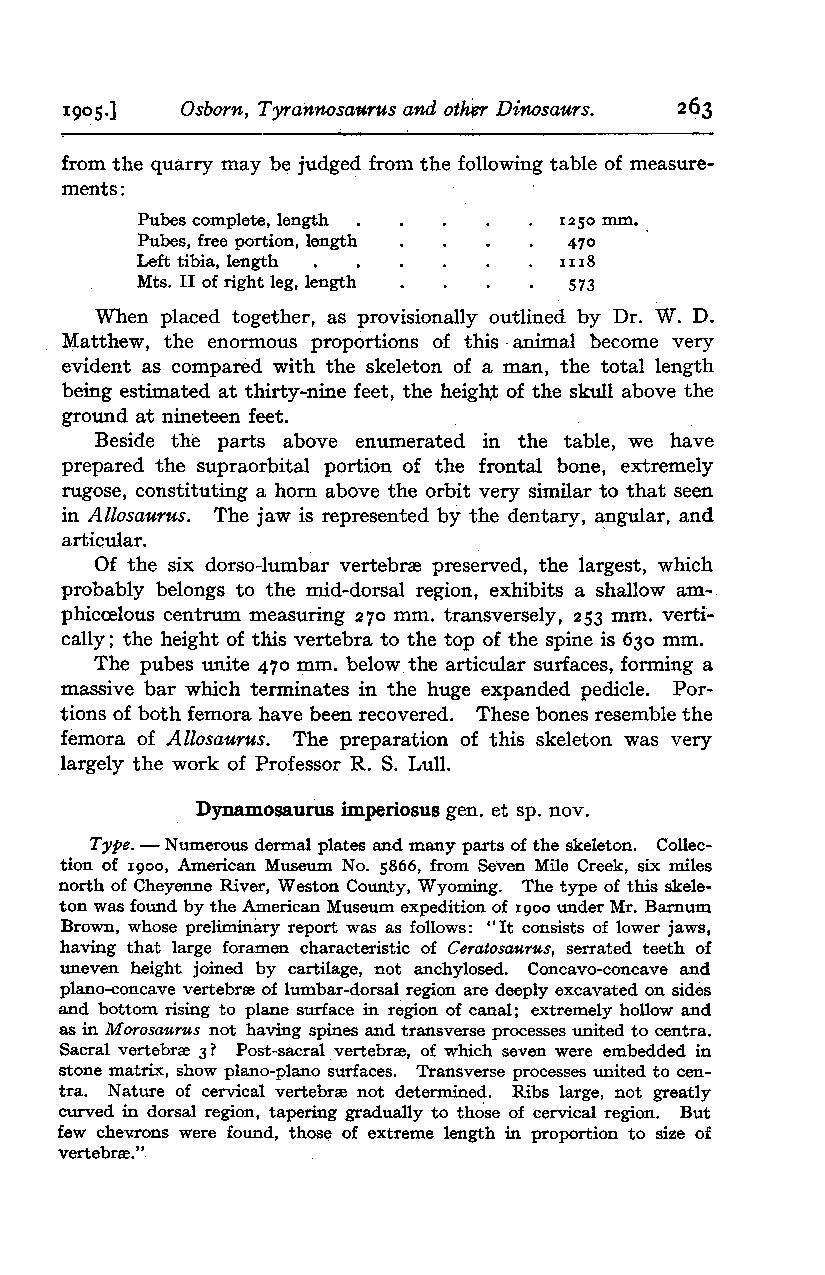from the quarry may be judged from the following table of measurements:
| Pubes complete, length | 1250 | mm. | |
| Pubes, free portion, length | 470 | ||
| Left tibia, length | 1118 | ||
| Mts. II of right leg, length | 573 |
When placed together, as provisionally outlined by Dr. W. D. Matthew, the enormous proportions of this animal become very evident as compared with the skeleton of a man, the total length being estimated at thirty-nine feet, the height of the skull above the ground at nineteen feet.
Beside the parts above enumerated in the table, we have prepared the supraorbital portion of the frontal bone, extremely rugose, constituting a horn above the orbit very similar to that seen in Allosaurus. The jaw is represented by the dentary, angular, and articular.
Of the six dorso-lumbar vertebræ preserved, the largest, which probably belongs to the mid-dorsal region, exhibits a shallow amphicœlous centrum measuring 270 mm. transversely, 253 mm. vertically; the height of this vertebra to the top of the spine is 630 mm.
The pubes unite 470 mm. below the articular surfaces, forming a massive bar which terminates in the huge expanded pedicle. Portions of both femora have been recovered. These bones resemble the femora of Allosaurus. The preparation of this skeleton was very largely the work of Professor R. S. Lull.
Dynamosaurus imperiosus gen. et sp. nov.
Type.—Numerous dermal plates and many parts of the skeleton. Collection of 1900, American Museum No. 5866, from Seven Mile Creek, six miles north of Cheyenne River, Weston County, Wyoming. The type of this skeleton was found by the American Museum expedition of 1900 under Mr. Barnum Brown, whose preliminary report was as follows: "It consists of lower jaws, having that large foramen characteristic of Ceratosaurus, serrated teeth of uneven height joined by cartilage, not anchylosed. Concavo-concave and plano-concave vertebræ of lumbar-dorsal region are deeply excavated on sides and bottom rising to plane surface in region of canal; extremely hollow and as in Morosaurus not having spines and transverse processes united to centra. Sacral vertebrae 3? Post-sacral vertebræ, of which seven were embedded in stone matrix, show plano-plano surfaces. Transverse processes united to centra. Nature of cervical vertebræ not determined. Ribs large, not greatly curved in dorsal region, tapering gradually to those of cervical region. But few chevrons were found, those of extreme length in proportion to size of vertebræ."

